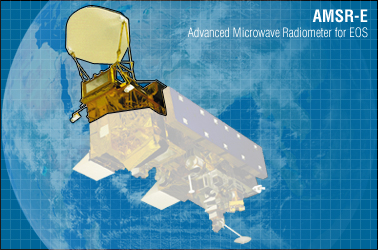The Advanced Microwave Scanning Radiometer for the Earth Observing System (AMSR-E) was automatically spun down to its designed 4 rpm safe condition last night after recent increases in the amount of power required to keep it spinning at its nominal 40 rpm were beginning to cause noticeable jitter in NASA’s Aqua satellite.
The instrument has over 480 pounds of spinning mass, and the lubricant in the bearing assembly gradually deteriorates over time. This deterioration has been monitored, and automatic shutdown procedures have been in place for years if the amount of torque required to keep AMSR-E spinning exceeded a certain threshold.
Starting about October 1, AMSR-E was causing yaw vibrations in the Aqua satellite attitude which were increasingly exceeding the +/- 25 arcsecond limits that are required by other instruments on the spacecraft. Last night, the 4.5 Newton-meter torque limit was apparently exceeded, and the instrument was automatically spun down to 4 rpm.
At this point it appears that this event likely ends the useful life of AMSR-E, which has been continuously gathering global data on a variety of parameters from sea ice to precipitation to sea surface temperature. It’s 9+ year lifetime exceeded its 6 year design life.
AMSR-E was provided to NASA by Japan’s Aerospace Exploration Agency (JAXA), and was built by Mitsubishi Electric Company. It was launched aboard the Aqua satellite from Vandenberg AFB on May 2, 2002. It has been an extremely successful experiment, and has gathered a huge quantity of data that will be revealing secrets of weather and climate as scientific research with the archived data continues in the coming years.
As the U.S. Science Team Leader for AMSR-E, I would like to congratulate and thank all of those who made AMSR-E such a success: JAXA, MELCO, NASA, the University of Alabama in Huntsville, the National Snow and Ice Data Center (NSIDC) in Boulder, and the U.S. and Japanese Science Teams who developed the algorithms that turned the raw data collected by AMSR-E into so many useful products.
The good news is that AMSR2, a slightly modified and improved version of AMSR-E, will be launched early next year on Japan’s GCOM-W satellite, and will join Aqua and the other satellites in NASA’s A-Train constellation of Earth observation satellites in their twice-daily, 1:30 a.m./p.m. sun-synchronous polar orbit. It is my understanding that those data will be shared in near-real time with U.S. agencies.
We had hoped that AMSR-E would provide at least one year over data overlap with the new AMSR2 instrument. It remains to be determined – and is only speculation on my part – whether there might be an attempt to gather some additional data from AMSR-E later to help fulfill this cross-calibration activity with AMSR2. [The Aqua satellite can easily accommodate the extra torque imparted to the spacecraft, and last night’s spin-down of AMSR-E was mostly to eliminate the very slight chance of sudden failure of the AMSR-E bearing assembly which could have caused the Aqua satellite to go into an uncontrolled and unrecoverable tumble.]
Again, I want to thank and congratulate all of those who made AMSR-E such a huge success!
UPDATE #1: As of early this morning, the torque required to keep AMSR-E spinning at 4 rpm was too large for its own momentum compensation mechanism to handle, with excessive amounts of momentum being dumped to the spacecraft. As a result, the instrument has now been spun down to 0 rpm. The satellite has shed the excessive momentum, and is operating normally, as are the other instruments aboard the spacecraft (MODIS, CERES, and AIRS).

 Home/Blog
Home/Blog




